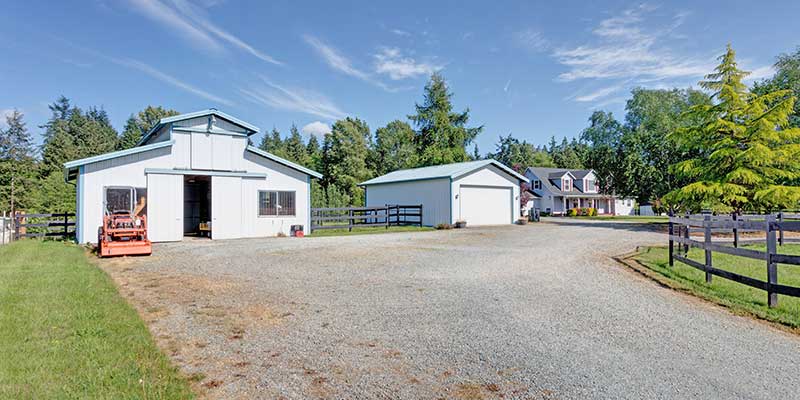Coverage Corral
Care, Custody and Control and Non-Owned Horses Go Together Like Peanut Butter and Jelly
Peanut butter and jelly, burgers and fries, summer and vacation… some things just immediately fit together. How about non-owned horses and Equine Care, Custody or Control insurance (CCC)? If you are talking with your clients and they mention non-owned horses, do you automatically think of CCC? If not, you could be leaving a gap in their insurance protection. Our Commercial General Liability product specifically excludes coverage for property of others in one’s care, custody or control. A horse is considered property. How do you fill this void? Offer them CCC coverage. Equine Care, Custody or Control insurance is an essential coverage for all horse operations which involve non-owned horses, such as boarding, breeding and training. This coverage could pay on your client's behalf the amount they are legally obligated for injury, theft or death of horses in their care, custody or control. Facilities that require their clients to have mortality coverage is a great practice, but will not protect the equine professional from being sued if an accident occurs. CCC will also give your client defense costs. Please consult the policy form for all the details. We offer a variety of CCC limits. Talk to your Underwriter today about this coverage and how you can put the icing on the cake of protection for your client.
What is the Primary and Noncontributory Endorsement and Why Should You Care?
You get a request from an Insured to add Primary Noncontributory to the policy in relation to a requirement from a lessor or boarding stable. What does this mean? How does our policy respond without the Primary and Noncontributory (AL 7625) endorsement? Does adding the endorsement mean our policy will provide the only coverage in the event of a claim?
HOW DOES OUR GL FORM RESPOND WITHOUT THE AL 7625?
Form AL 7403 – Farm Liability Coverage Form states that our insurance is primary EXCEPT when:
- Other applicable insurance is Fire, Extended Coverage, Builders Risk, Installation Risk or similar coverage for “your work.”
- Other applicable insurance is Fire Insurance for premises rented to the Insured or temporarily occupied by the Insured with permission of the owner.
- Other applicable Insurance is purchased by the Insured to cover their liability as a tenant for “property damage” to premises rented to the Insured or temporarily occupied by them with the permission of the owner.
- The loss arises out of the maintenance or use of aircraft, “motor vehicle” or watercraft to the extent.
- Other applicable insurance is primary to the Insured covering liability for damages arising out of the premises or operations, or the products or completed operations for which the Insured has been added as Additional Insured.
When the above situations arise, our policy acts as Excess coverage. If the other policies do not meet the above-mentioned stipulations that make our policy excess and all other insurance permits contribution by equal shares, we will follow the equal share method. Each insurer will contribute equal amounts until it has paid its applicable Limit of Insurance or none of the loss remains, whichever comes first. If any other insurance does not permit contributions, we will contribute by limits. Each insurer’s share is based on the ratio of its applicable Limit of Insurance to the total applicable Limits of Insurance of all insurers.
WHAT DOES THE PRIMARY AND NONCONTRIBUTORY ENDORSEMENT DO?
Primary and Noncontributory language in insurance changes the order of which multiple policies triggered by one common loss should respond. The policy that contains Primary and Noncontributory language will respond first, before other applicable policies without requiring contribution from other policies that might normally be primary. However, once our policy limits have been reached, other applicable insurance may have to step in if the loss is over our policy limits.
WHAT TRIGGERS THE PRIMARY AND NONCONTRIBUTORY ENDORSEMENT?
- The NAMED INSURED must be a NAMED INSURED under the other insurance. If the Named Insured is NOT a Named Insured under the other insurance, the Primary and Noncontributory endorsement will not be triggered.
- Primary and Noncontributory status must be agreed to IN WRITING in a contract or agreement with the Additional Insured. If the party requiring the Primary Noncontributory status is not an Additional Insured and has not required the Primary Noncontributory status in WRITING, the endorsement will not be triggered.
The above situations are especially important to understand as the order of how policies are triggered will not be changed unless those stipulations are met. Adding the Primary Noncontributory endorsement does not automatically mean our policy will pay first.
Feel free to ask your Underwriter any additional questions you might have about how our policy responds with or without the Primary and Noncontributory endorsement.
Coverage B vs Coverage G

A detached garage, is it Coverage B – Other Private Structures Appurtenant to Dwellings or should it be scheduled as Coverage G – Barns, Outbuildings and Other Farm Structures? The answer…. It depends. The use of the structure is the trigger. To qualify as Coverage B, the structure must service the dwelling. Does the garage have an apartment which is rented out? Is it used to store items used in the farming business? Is the garage used to store their cars but also mowers used in their lawn business? When discussing insurance with your clients, make sure to ask questions about these outbuildings. Form AP 7204 provides details on Coverage B, what is covered property, what is not covered and the Special limits under this Coverage. Talk to your Underwriter about this Coverage and how to make sure your insured is properly covered.